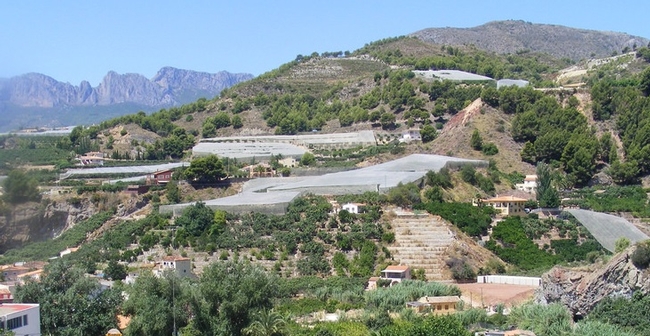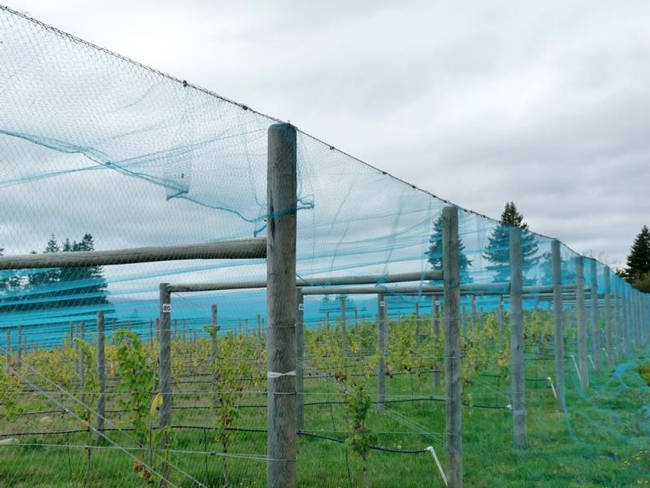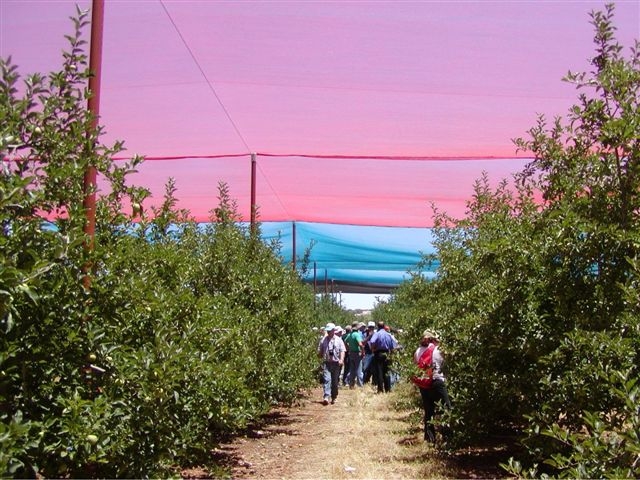At a recent meeting for current and prospective avocado growers near Visalia, Yosepha Shahak a retired researcher from Israel's Volcani Institute presented information on photo-selective netting. This netting was an outgrowth of netting that is used in the Mediterranean region to protect crops from frost damage and the unpredictable hail storms that can occur just as fruit might be coming to harvest. Netting is currently used in commercial orchards and vineyards throughout Europe. San Joaquin Valley growers like the idea of frost protection.
Netting over loquats (nespero) in Spain (Espana)
Netting over apples in Australia
Netting for light modification in Israel. Tractors can work here.
Photo-selective netting refers to covering crops by nets having the capacity to selectively filter the intercepted solar radiation, in addition to their protective function. The technology is based on plastic net products into which light dispersive and reflective elements are introduced during manufacturing. These nets are designed to screen various spectral bands of the solar radiation, and/or transform direct light into scattered light. The spectral manipulation intends to specifically promote desired physiological responses, which are light-regulated, while the scattering improves the penetration of the modified light into the inner plant canopy. So, depending on the crop, more and better fruit set, bigger fruit and some other desirable properties. The netting can also substantially reduce evaporative demand and wind damage. This can lead to not only lower water use, but also such water stress related diseases, such as blight caused by Botryosphaeria fungi. Lower evaporative demand and less water application can lead to less salt damage.
A recent additional aspect to the photo-selective nets refers to their effects on pest behavior. The photo-selective netting concept was developed and tested in Israel in ornamental, vegetable and fruit tree crops. It is gradually spreading all over the world, for implementation in different crops, climatic regions and cultivation methods. Applying it to avocado orchards is going to require pruning and keeping trees so that they can be picked and pollinated. And would probably lead to high density orchards.
And how we do pest management – more or less, and maybe not by helicopter?
This might also be the future for how citrus is grown in an HLB environment. 24 sprays a year to control ACP in Florida -Yikes.
A link to a Shahak talk that she gave to Washington state apple growers can be found at:


